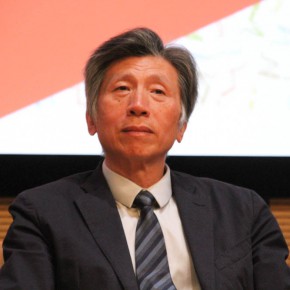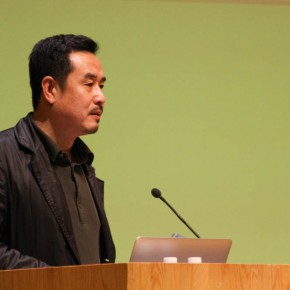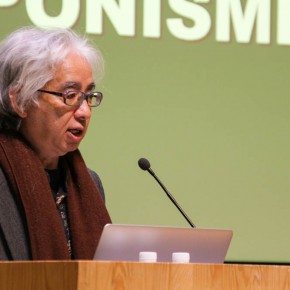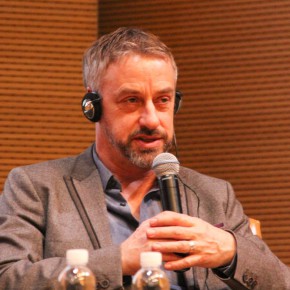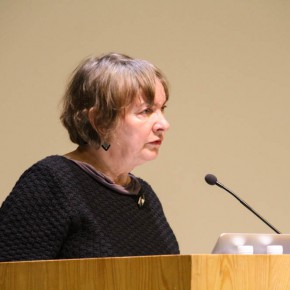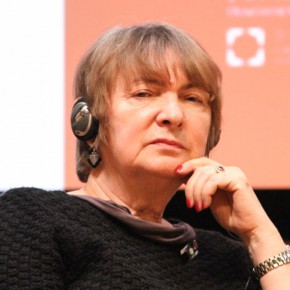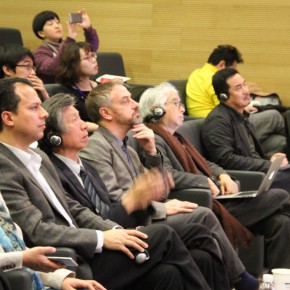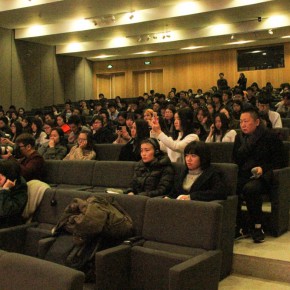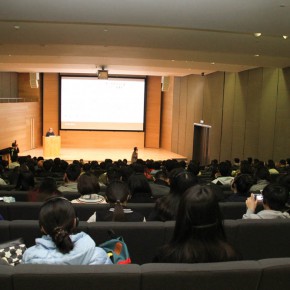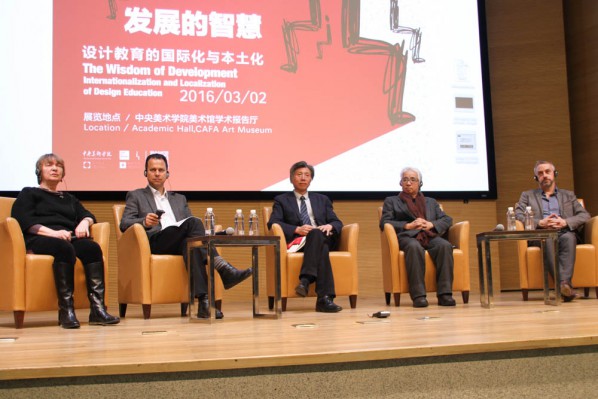
On March 2, 2016, “The Wisdom of Development – Globalization and Localization of Design Education” forum was held in the Auditorium of CAFA Art Museum, and it was the related thematic forum of the 7th “Design for Sitting” Grand Prix Exhibition and International Invitation Exhibition.
“The Wisdom of Development” is a series of projects taking design as the core, connected to the global economy and culture, trying to borrow the wisdom of the designers, to expand the design thinking to a broader field with an open mind. The forum is divided into 2 parts, the first part held in the morning was hosted by the Dean of the School of Urban Design, CAFA Wang Zhong, the honored guests invited to attend it included President of CAFA Fan Di’an, Naren Barfield, Vice President of the Royal Academy of Art, UK, Arisumi Mitamura, Vice President of Tokyo University of the Arts in Japan, Halina Kosciukiewicz, a professor at Akademia Sztuk Pięknych w Gdańsku, Poland, Peter William Barker, Department Head of Kolding Design School, Denmark.
Fan Di’an: The global age is a new landscape continuously condensed by all sorts of wisdoms, experiences and knowledge
First of all, the President of CAFA Fan Di’an addressed the opening ceremony and gave a keynote speech. He said that, from the “Design for Sitting” exhibition to this forum, there has been a transformation in the feeling of artwork to thoughts on the new characteristics of the developmental trend in art design and art education. Then there was an analysis of the concept of “globalization” in the theme of the forum, pointing out its difference with the “internationalization”, and “the international focus on the discussion of multilateral exchanges between one country and another country. The 21st century is a globalization age, it is necessary for us to feel the starting point from the recognition of the differences between the two vocabularies.”
In the education of design, it is necessary for the younger generation to consider the social relationship of humans, the relationship between humans and nature, these topics are of global characteristics, and also combine the local social development requirements, Fan said that, “for the design of “sitting”, it should reach the issue of human”. Finally, Fan put forward the disadvantages of overdependence on the faith in globalization. He said that, the excellent cultural experiences of different nations themselves were new powers for global cultural confluence today.
Arisumi Mitamura: Starting from history to explore a new normal for the relationship between globalization and localization
Arisumi Mitamura, Vice President of Tokyo University of the Arts in Japan gave a speech from the historical perspective, and he said that, it was the only way to see the future in history. Under the age of globalization, the relationship between the East and West was constantly changing. Arisumi Mitamura listed four patterns: Westernized Chinese style, Sinicized Chinese style, Sinicized western style, and Westernized western style. “The trend of globalization is faster and faster, and being increasingly significant, but where does this originate?” Arisumi Mitamura gave his own answer, “I feel that it is necessary to consider nationality.” In terms of the design of education, as a professor, Arisumi Mitamura thought that the students should not only learn knowledge in school, but also go to practice and subside in the society. In the epilogue part, Arisumi Mitamura left a thought: in the earth with limited resources, it is because of the graces of the forest and the earth that we can create our future. In order to create an abundant future, what should we do?
Naren Barfield: Design needs a combination of an international vision and local culture
Naren Barfield, Vice President of the Royal Academy of Art, UK started from the distinction of the three concepts of “internationalization”, “globalization” and “localization”, and put forward four focal points for the discussion: the challenge of design education and educational designer, the design education for the society desiring information, teaching on the production in the studio, global citizenship and design education. First of all, he analyzed from the perspective of design education. Under the globalization, the students were located in a design globalized world after graduation, which required the educators to survey the relationship between design education and different cultures. As the colleges and universities of design, they should have a global vision, to build global partnerships with a global background, but it was necessary to prevent the consequences that everything was the same, and there is a lack of personality; secondly, the discussion of the design education within the information society was not simply a discussion of “whether design is traditional or electronic”, but it forms an harmonious relation between both, to produce a useful design for the users; thirdly, Barfield thought that the educational mode of a workshop was very important for design education. Students could know the feeling of various materials in the process of learning, and being familiar with their weight, density, etc.; Finally, for the global citizenship, Barfield said, “Now we are faced with the challenge of internationalization and localization, which needs us to have an international vision, and look for a way in the international vision to be able to merge the local culture, history and skills.”
Halina Kosciukiewicz: Design education needs to enhance the social cognition of design
Halina Kosciukiewicz, a professor at Akademia Sztuk Pięknych w Gdańsku, Poland introduced the design project of Akademia Sztuk Pięknych w Gdańsku, and the teaching style of the school. She said that, the information society was based on science, modernization, and also the design, which was the core issue of the public discussion. She put forward three questions: how to cultivate a designer who is courageous to accept the contemporary social challenges? How to create a demand for valuable design? How to provide an effective teaching plan, so that the students can apply their knowledge and enter the market?
Halina Kosciukiewicz thought that, design was both globalized and localized - it was a blend of the global achievements of the global technology, information and communication technology, the economy marketing and other various fields, at the same time, it was associated with the handicrafts from country to country, the regional tradition, and local culture and art. As an educator, it is not limited to the cultivation of design students, but also widely improves the public cognition of design, especially enhancing the public acceptance of the “useful, user friendly and durable” design, because such a design is an artwork itself, and also a beautiful work.
At the end of the forum in the morning, all the honored guests arrived at the stage, answered the questions from the students and had a discussion on the issues including “Preserve and carry forward traditional art”, “How to apply the traditional to the contemporary design”, “Curriculum design of the design education”, “Inheritance and development of the traditional handicraft industry”.
Text by Lin Jiabin, Photo by Hu Sichen/CAFA ART INFO
Translated by Chen Peihua and edited by Sue/CAFA ART INFO


